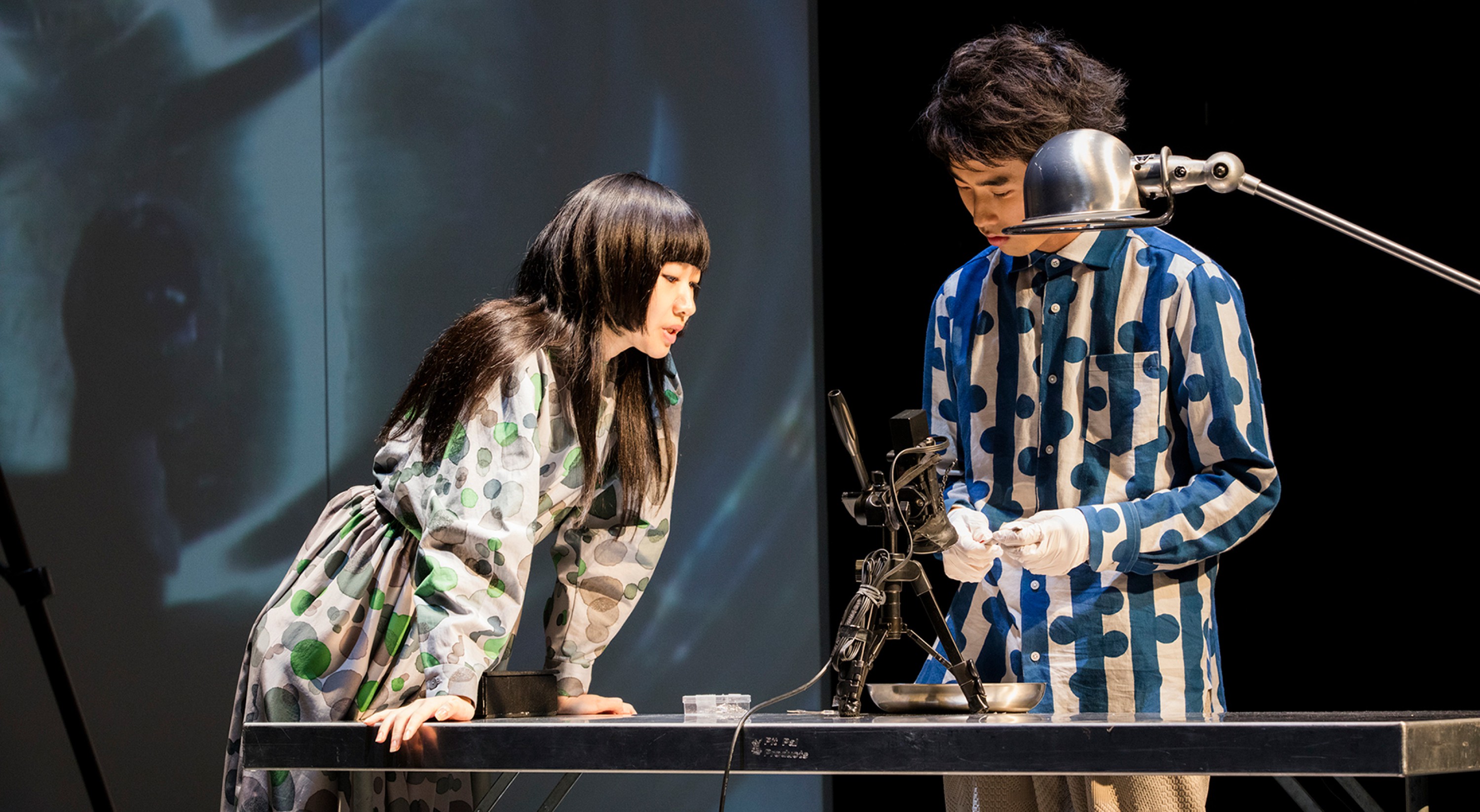Takahiro Fujita
Jetons les livres, sortons dans la rue (Throw Away Your Books, Rally in the Streets)
novembernov 21 – 24
Adapted for theatre and directed by Takahiro Fujita
Original work by Shûji Terayama
With Izumi Aoyagi, Yuriko Kawasaki, Mina Sasaki, Jitsuko Mesuda, Ryosuke Ishii, Shintarô Onoshima, Tatsuya Tsujimoto, Hirotaka Nakashima, Satoshi Hasatani, Kenta Funatsu
Musician, Tatsuhisa Yamamoto (drums)
Video appearances, Hiroshi Homura (poet), and Naoki Matayoshi (comedian)
Lighting, Kaori Minami
Costumes, Minä Perhonen
Sound, Daisuke Hoshino
Video, Jitsuko Mesuda
Hairdressing, Shinji Ikeda
Projection Illustration, Aquirax Uno
Conception de police projetée, Nakui Naoko
Assistante à la mise en scène, Fumiko Ogura
Régisseuse générale, Kaori Moriyama
Régisseuse son, Ai Imazato
Régisseuse vidéo, Kaede Konishi
Régisseurs plateau, Kenichi Maruyama, Yui Kato
Habilleuse, Sachiko Wakabayashi
Chargée de production, Kana Hayashi assistée par Shiori Koga
Chargée de tournée, Miwa Monden
Maquillage et coiffure, Naoyuki Akama
Surtitrage, Miyako Slocombe (supervisé par Aya Soejima)
A Tokyo Metropolitan Theatre (Tokyo Metropolitan Foundation for History and Culture) production
Organised by Fondation du Japon
In association with Maison de la culture du Japon à Paris ; and Festival d’Automne à Paris
Show presented as part of Japonismes 2018
With support from the Fondation franco-japonaise Sasakawa
First performed on 5 December 2015 at Tokyo Metropolitan Theatre
Takahiro Fujita tackles the work of a cult figure in Japanese artistic circles of the 1970’s : Shûji Terayama. Intermingling a wide variety of different atmospheres, this prodigious figure on the young Japanese theatre scene brings back to life, in a radically contemporary way, the unstoppable energy of a bygone era.
When he died in 1983, aged forty-seven, he left behind him more than two hundred books, around twenty films and countless horse-racing chronicles. Shûji Terayama remains a sacred beast of Japanese counter-culture. Throw Away Your Books, Rally in the Streets, one of his most representative early works is the title of a film (1971) which the recounts the story of a young man whose little sister is raped by the players of a football club he is a member of. The author and director Takahiro Fujita, born in the north of Japan in 1985, and whose talents have come to the notice of the likes of writer Oriza Hirata, uses this film as the basis for his piece. Its opening scene, which shocked viewers at the time, is played out in front of the audience. What characterises the piece is the heterogeneous blend of registers that he brings together in a dream-like collage - ranging from the documentary to a colourful, poppy universe. Highly representative of the era in which it is set, Takahiro Fujita endeavours to translate every ounce of the trash-like energy of this “cruel tale of Japanese youth” to the stage. This depiction of an era, full of nonchalance and despair, has strangely contemporary echoes.
––––––
Running time: 2h
Performed in Japanese with French subtitles
In the same place


